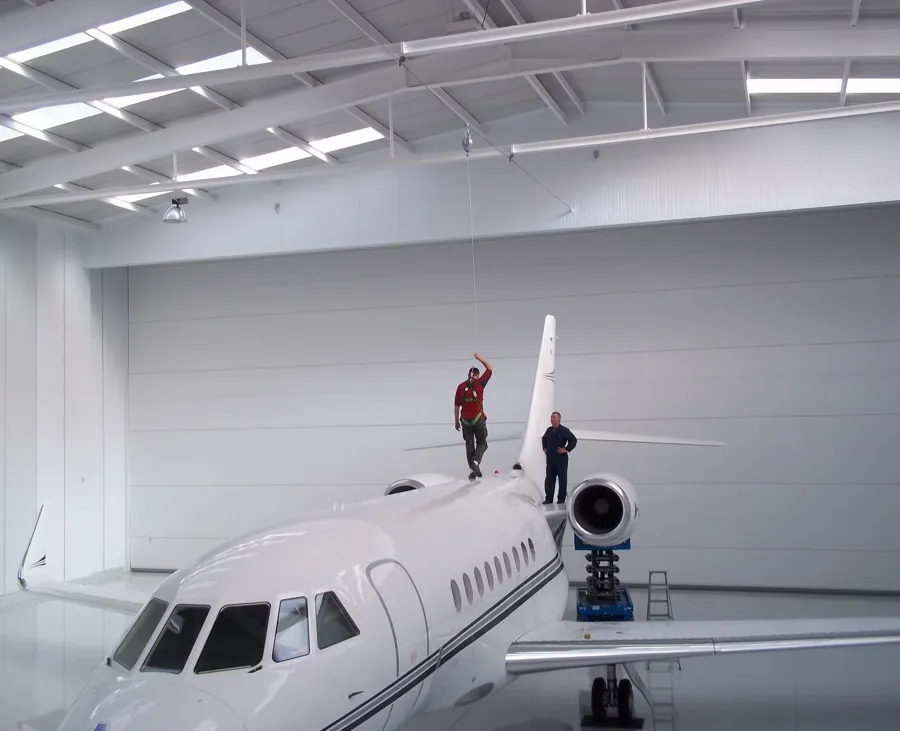
Vous visitez le site Web Canada Kee Safety depuis United States. Voulez-vous aller sur le site de {l'autre pays} ?
Vous visitez maintenant la version française du site Web de Kee Safety.
Two things come quickly to the mind of most passengers when the subject of aviation safety is brought up:
1. How long will it take me to get through airport security?
2. Is the plane air-worthy to fly?
It is hard to argue against the need to screen travellers before they board a flight; however, there are shortcuts to make the experience quicker and more comfortable. Canada’s Verified Traveller Program expedites clearance for pre-screened passengers at ten major airports nationwide. Individual airlines may also offer quicker passage through security—for those who pay an additional fee, of course.
There are no shortcuts to ensure the plane is in top mechanical condition for flight. In fact, according to Canadian Aviation Regulations (CAR) SOR-96-433—Subpart 71, there is a wide array of aircraft maintenance requirements that need to be followed for general (e.g., ramp checks) and specialized (e.g., frame, engine, propeller) maintenance, repairs, modifications, and installation of spare parts.
Another level of safety may not immediately come to mind; however, fall protection systems for maintenance personnel are also critical. They work at elevated heights to ensure your flight is mechanically safe and that airport building facilities function optimally. Like flight crews, maintenance workers undergo extensive training and are more competent and qualified after completing fall protection and rescue training.

Whether servicing a jumbo jet or a small helicopter, accessing the front, back, and sides of an aircraft requires working at height. Ladders are inherently inefficient and not as safe as an elevated work platform.
Constructed of aluminum or galvanized steel frames and guardrails for strength, durability, and corrosion resistance, work platforms feature anti-slip, non-bounce, self-draining treads for steps and platform decks. Toe boards can be included for added slip and fall protection and provide a barrier against tools falling below.
Elevated work platforms can be built to the size needed and offer workers outstanding freedom of movement. Options include:

Accessing the top of an aircraft safely is particularly challenging. An overhead rigid rail system—easily installed in aircraft hangars—tethers workers to a stable anchorage. It allows freedom of movement, especially for precise, technical work, and in case of a slip, the system stops the worker quickly. This prevents further injury or damage and reduces trauma by eliminating the “pendulum effect.”

From regional airports to major hubs, airport terminals and ancillary buildings require workers to access the roof and perform maintenance and repair operations for heating, ventilation, air-conditioning (HVAC), and other building services systems.
A perimeter roof guardrail system provides workers with the best overall safety measure for flat or low-sloped roofs. As a “collective” system, it protects several people at once without special training or equipment. Constructed of aluminum or galvanized steel for strength, durability, and corrosion resistance, the modular system is easily installed without welding, drilling, or penetrating the roof membrane.

Whether a flat or architecturally contoured airport building, a roof walkway system set on galvanized steel frames provides a safe path for workers to traverse the roof without damaging the rooftop. Its anti-slip treads are also self-draining to help prevent slips and falls from water and ice. Walkways can be fitted with guardrails for added fall protection.

A horizontal lifeline is a personal or “active” fall protection system with outstanding versatility. It features galvanized and stainless steel components, is engineered for the roof configuration, and can support up to three workers at once across a span of 39 feet (11.9 meters).

A compliant anchorage is the founding force of a horizontal lifeline system. Single-point roof anchors designed explicitly for horizontal lifelines are installed permanently. Mobile tie-off anchors are a deadweight system with a post to provide optimum flexibility.

Certified training courses will enhance the practical application and “culture of safety” in aviation maintenance.
Personal Fall Protection Equipment (PFPE) training qualifies individuals as PFPE inspectors through examinations of equipment and identification of damaged equipment to be taken out of service.
Rescue After a Fall details the legal requirements of working at height and rescue, the hierarchy of controls, identifying the equipment needed to conduct a rescue, and carrying out a rescue.
As the pandemic subsides, an increasing number of passengers are taking to the airlines for business and pleasure travel. Their safety depends on security measures in the terminal and expert maintenance by professional crews. Fall protection systems and equipment that meet regulatory standards protect the workers who protect the passengers.

Case Study / Aviation

Our platforms are OSHA/ANSI/CSA compliant and suitable for hard to access areas such as elevated machinery, shelved warehouse inventory, tall vehicles, construction, or any application requiring a protected elevated work surface with railing. Our full range of access platforms and work stands are offered as either permanent fixed structures or with wheels so they can be deployed where needed.